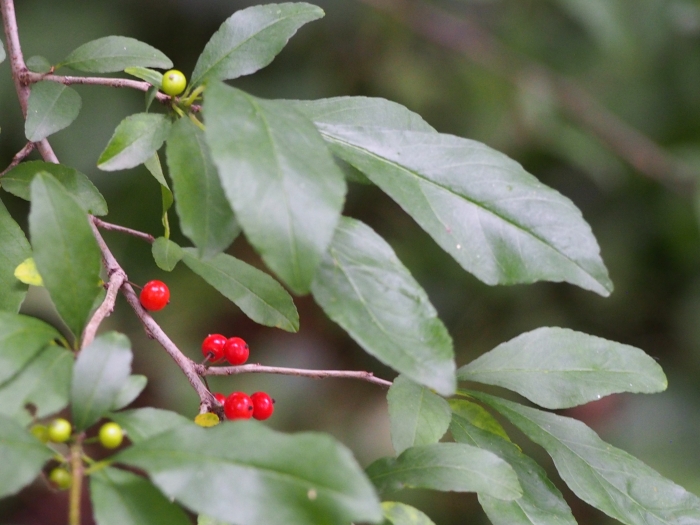Possumhaw
(Ilex decidua)
Possumhaw (Ilex decidua)
/
/

Agnieszka Kwiecień, Nova
CC BY-SA 4.0
Image By:
Agnieszka Kwiecień, Nova
Recorded By:
Copyright:
CC BY-SA 4.0
Copyright Notice:
Photo by: Agnieszka Kwiecień, Nova | License Type: CC BY-SA 4.0 | License URL: https://creativecommons.org/licenses/by-sa/4.0 | Uploader: Nova | Publisher: Wikimedia Commons | Title: Ilex_decidua_Ostrokrzew_2019-07-20_02.jpg | Notes: == {{int:filedesc}} == {{Information |description=Ilex Decidua, Possumhaw Holly |date={{Taken on|2014-09-14}} |source=http://www.panoramio.com/photo/111957126 |author=[http://www.panoramio.com/user/3016635?with_photo_id=111957126 En el nido (









































































Estimated Native Range
Summary
Ilex decidua, commonly known as Possumhaw or Meadow Holly, is a deciduous shrub or small tree native to bottomland forests, swamps, and along streams in the Southeastern United States and the Gulf Coast. It typically grows to a height of 10-15 feet but can reach up to 30 feet in the wild, with an upright, clumping habit that can form a large, spreading mound if left unmanaged. The bark is light brown to gray, varying from smooth to warty and roughened. Possumhaw is notable for its lack of significant fall foliage color change, but it compensates with small, white flowers from March to May, followed by showy red or rarely yellow drupe fruits, 4-8 mm in diameter, that persist through winter after leaf drop, providing visual interest and a food source for wildlife.
Possumhaw is valued for its ornamental berries and adaptability to wet conditions, making it suitable for stabilizing stream banks and water retention pond edges. It is also recommended for urban plantings such as parking lot buffer strips, highway medians, and residential gardens. It thrives in full sun to part shade, tolerates a range of soil drainage conditions, and requires medium amounts of water. Despite its benefits, gardeners should be aware that it may form suckers, leading to a thicket if not managed.CC BY-SA 4.0
Possumhaw is valued for its ornamental berries and adaptability to wet conditions, making it suitable for stabilizing stream banks and water retention pond edges. It is also recommended for urban plantings such as parking lot buffer strips, highway medians, and residential gardens. It thrives in full sun to part shade, tolerates a range of soil drainage conditions, and requires medium amounts of water. Despite its benefits, gardeners should be aware that it may form suckers, leading to a thicket if not managed.CC BY-SA 4.0
Plant Description
- Plant Type: Tree, Shrub
- Height: 7-15 feet
- Width: 5-12 feet
- Growth Rate: Moderate
- Flower Color: N/A
- Flowering Season: Spring
- Leaf Retention: Deciduous
Growth Requirements
- Sun: Full Sun, Part Shade
- Water: Medium
- Drainage: Medium
Common Uses
Bee Garden, Bird Garden, Butterfly Garden, Deer Resistant, Drought Tolerant, Fire Resistant, Low Maintenance, Rabbit Resistant, Salt Tolerant, Street Planting
Natural Habitat
Bottomland forests, swamps, and along streams
Other Names
Common Names: Possomhaw Holly, Possum Haw, Swamp Holly, Sommergrüne Winterbeere
Scientific Names: , Ilex decidua, Ilex decidua var. decidua, Ilex decidua var. curtissii, Ilex curtissii, Prinos deciduus, Ilex berberidifolia, Ilex prinoides, Ilex aestivalis, Ilex tenuifolia
GBIF Accepted Name: Ilex decidua Walter